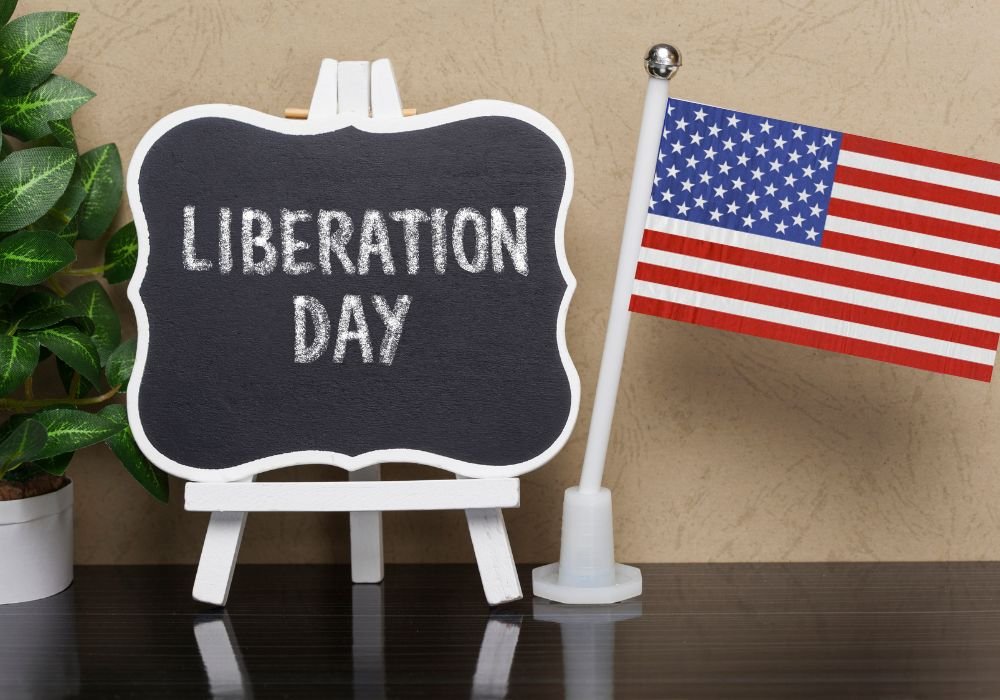
Tariffs Won’t Bring Millions of Jobs Back to U.S. – Here’s the Reality
Many believe tariffs will magically bring back millions of factory jobs to the U.S. But this belief doesn’t align with economic or technological reality. The core objective of tariffs isn’t to revive low-skill manufacturing jobs—it’s something far more strategic.
Tariffs Won’t Bring Millions of Jobs Back to U.S. – That’s Not the Goal
Reviving millions of traditional factory jobs is not what tariffs are designed for. The age of mass low-skill labour is over. Any new factory built in the United States will likely be fully automated, powered by AI, robotics, and smart systems. These high-tech environments don’t need thousands of manual workers—they need skilled technicians, engineers, and programmers.
U.S. Unemployment Rate Is Already Low
As of early 2025, the U.S. unemployment rate sits at a mere 4.2%, below the historical average of 5%. So, where would these “millions of new workers” even come from? Source: U.S. Bureau of Labour Statistics
Former President Donald Trump is also pursuing immigration reform, including deportation of illegal residents and limits on new immigration. The available workforce is shrinking, not growing. This makes the push for labour-intensive manufacturing even more questionable.
Tariffs Won’t Bring Back Jobs to U.S. – But They Serve Bigger Goals
Let’s break down what tariffs are really intended to do:
1. It’s About Creating Better Jobs, Not More Jobs
Tariffs encourage the development of higher-quality, high-skill roles. Think:
- Robotics engineers
- Advanced machine operators
- AI systems technicians
These roles contribute to innovation and global competitiveness, not just headcount.
2. Know-How Is a Strategic Asset
When countries give away the ability to manufacture, they lose the know-how to build and innovate. That’s dangerous. It weakens the industrial base. Protecting manufacturing ensures that the nation retains its technical edge.
3. National Security Comes First
No intelligent country should rely on others for essential goods like:
- Defence weapons
- Steel
- Pharmaceuticals
- Food supply
Insourcing manufacturing for these sectors isn’t just smart—it’s critical. Tariffs help redirect production of these strategic materials back home.
4. Tariffs Generate U.S. Revenue
Beyond job creation, tariffs represent a powerful revenue stream for the government. Billions have already been collected from Chinese and other imports. These funds can support domestic programs, infrastructure, or innovation.
👉 Related post: Impact of Trump Tariffs on U.S. Revenue
5. Tariffs Encourage Domestic Investment
American companies spend billions setting up offshore facilities. With tariffs in place, it becomes cheaper and smarter to manufacture in the U.S. This boosts domestic industry and strengthens the supply chain.

Trump’s “Liberation Day” – A War for Economic Independence
Trump recently called this movement a “Liberation Day”—a turning point in reclaiming economic independence. It’s not just about bringing jobs back. It’s about:
- Fair trade
- Free competition
- Innovation
- Best value for consumers
The U.S. is moving toward a new industrial era, and tariffs are part of that strategy—not a magic solution for past job loss.

Conclusion: Tariffs Won’t Bring Back Jobs to U.S. – And That’s Okay
Rather than aiming for a return to outdated manufacturing models, the U.S. is pivoting to smarter, tech-driven industries. Tariffs serve that transition—not by employing millions in low-wage roles, but by creating a future-proof economy.
✅ FAQs:
❓ Will tariffs bring back millions of manufacturing jobs to the U.S.?
No, tariffs are not designed to bring back millions of traditional manufacturing jobs. Modern factories are highly automated and require fewer workers. The focus is on creating high-skill, high-tech jobs, not mass low-skill employment.
❓ Why won’t tariffs bring back jobs to the U.S.?
Tariffs won’t bring back jobs to the U.S. because technological advancements, automation, and global labour trends have permanently shifted how manufacturing operates. Even new U.S. factories rely more on robots and AI than human labour.
❓ What is the U.S. unemployment rate in 2025?
As of early 2025, the U.S. unemployment rate is 4.2%, which is lower than the historical average. This suggests that there isn’t a large pool of unemployed workers available for traditional manufacturing roles.
❓ How do tariffs benefit the U.S. if they don’t create jobs?
Tariffs provide multiple benefits:
- Encourage domestic manufacturing
- Protect national security industries
- Generate government revenue
- Retain industrial know-how
- Promote economic independence
❓ What types of jobs are created by U.S. tariffs?
Tariffs help shift the economy toward skilled professions like:
- AI engineers
- Robotics technicians
- Supply chain analysts
- Machine learning experts
These roles support a future-ready workforce.
❓ Are American companies reshoring manufacturing due to tariffs?
Yes. Tariffs are motivating companies to bring production back to the U.S., avoiding high import duties and investing in local infrastructure. This trend is often called reshoring or insourcing.
❓ What did Donald Trump mean by “Liberation Day”?
“Liberation Day,” as mentioned by Trump, refers to the symbolic reclaiming of economic independence—shifting from foreign reliance to self-sustained growth and innovation in U.S. manufacturing.






